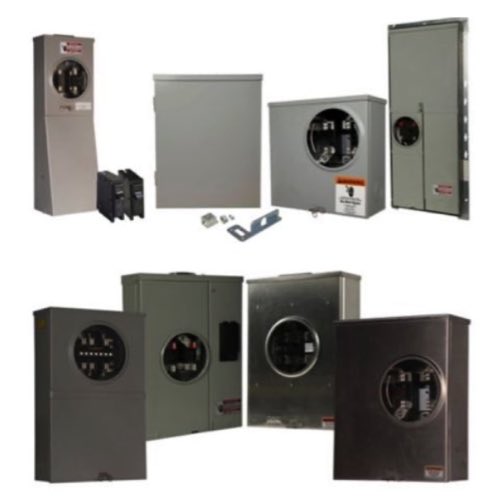Group Metering

Group metering systems provide a centralized solution for monitoring and distributing electrical power across multiple units within a single facility. Commonly used in industrial plants, commercial buildings, and multi-tenant installations, these systems allow facility managers to view real-time electrical usage and review historical consumption data from one organized location. This centralized approach simplifies energy management, supports accurate billing, and helps identify usage trends or high-demand units.
Available in both single phase and three phase configurations, group metering systems are designed to support a wide range of electrical loads and applications. A key component of these systems is the meter breaker, which combines a meter socket and a circuit breaker into a single assembly. This integrated design allows for efficient power distribution while providing individual circuit protection and metering for each unit. Bus rating is a critical consideration when selecting a group metering system, as it determines the total electrical capacity the enclosure can safely handle. Proper bus sizing ensures the system can support the connected loads, including equipment with higher power demands. Group metering enclosures are available in wired and unwired configurations, offering flexibility for standard installations or custom electrical designs based on project requirements.
FAQs
Q: Can single phase group metering enclosures handle multiple tenancy installations at one location?
Yes, single phase group metering enclosures are designed to support multiple tenancy installations, allowing each tenant to have individual metering and accurate electrical billing.
Q: What features are commonly found in residential group metering enclosures?
Residential group metering enclosures typically include individual circuit protection, weather-resistant and tamper-resistant construction, compatibility with smart meters, utility seal provisions, and clear labeling for each meter position.
Q: Are unwired enclosures available for group metering solutions?
Yes, unwired group metering enclosures are available, allowing installers to customize wiring configurations to meet specific project and load requirements.
Q: What is a bus rating in a group metering system?
The bus rating indicates the maximum electrical current the system can safely carry, ensuring the enclosure can handle the total connected load.
Q: Where are group metering systems commonly used?
Group metering systems are commonly used in industrial facilities, commercial buildings, apartment complexes, and other multi-tenant environments requiring centralized power monitoring.
Why Buy Group Metering from RSP Supply
RSP Supply offers a reliable selection of group metering systems designed to support centralized power distribution and accurate energy monitoring. Our group metering solutions provide flexibility in phase options, bus ratings, and wiring configurations to meet diverse application needs. Customers rely on RSP Supply for technical expertise, consistent product quality, and electrical solutions that support efficient facility management and long-term system reliability.

